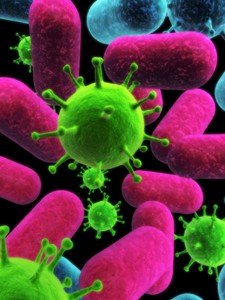The American Academy of CPR and First Aid is accredited by Postgraduate Institute for Medicine who is jointly accredited by the
Accreditation Council for Continuing Medical Education® (ACCME) to provide continuing education for the healthcare team.
- Bloodborne Pathogens
- Introduction
- Hepatitis B Virus
- Hepatitis C Virus
- HIV Virus
- Prevention
- How to wash hands
-
 Take Exam
Take Exam
- Certificate
Welcome to Bloodborne Pathogens
Introduction
What are Bloodborne Pathogens?
Microorganisms such as viruses, bacteria, or parasites that can enter the human blood stream causing diseases.
Examples of Bloodborne Pathogens:
Common examples include hepatitis B, hepatitis C, and HIV (human immunodeficiency virus)
How do they enter the bloodstream?
These microorganisms may be transmitted when mucous membranes or non-intact skin (cuts, abrasions, burns) are exposed to human blood or body fluids. Other modes of transmission include blood splashes, handling contaminated items, needle sticks or cuts from contaminated sharps.
What are Hepatitis Viruses?
Hepatitis is inflammation (pain and swelling) of the liver. Viruses that cause inflammation of the liver are called Hepatitis viruses.
|
||||
| Course Progression Bar | ||||
